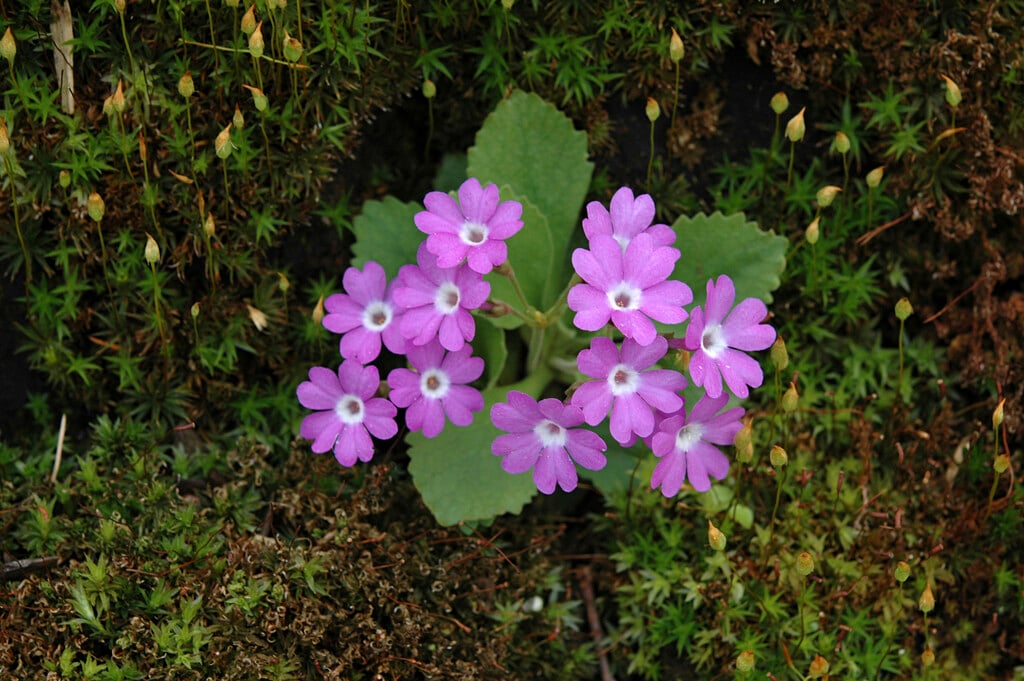Primula hirsuta (Au)
A compact, rosette-forming species of evergreen perennial with spoon-shaped, toothed pale green foliage, and fragrant, pale pink to dark red-purple flowers with a white eye, appearing in spring
Size
Ultimate height
0.1–0.5 metresTime to ultimate height
2–5 yearsUltimate spread
0–0.1 metreGrowing conditions
Moisture
Moist but well–drained, Poorly–drainedpH
Acid, NeutralColour & scent
| Stem | Flower | Foliage | Fruit | |
| Spring | Pink Purple Red | Green | ||
|---|---|---|---|---|
| Summer | Green | |||
| Autumn | Green | |||
| Winter | Green |
Position
- Full sun
- Partial shade
Aspect
East–facing or North–facing or South–facing or West–facing
Exposure
Exposed or Sheltered Hardiness
H5Botanical details
- Family
- Primulaceae
- Native to GB / Ireland
- No
- Foliage
- Evergreen
- Habit
- Clump forming
- Genus
Primula are herbaceous or semi-evergreen perennials, forming a basal rosette of simple leaves, with salver-shaped or bell-shaped flowers which may be solitary or carried in an umbel or in whorls on an erect stem
- Name status
Correct
- Horticultural Group
- Auricula section primulas are evergreen perennials with leathery, often farinose foliage and simple umbels of salver-shaped flowers which are usually pink, purple or yellow
- Plant range
- C Alps, Pyrenees
How to grow
Cultivation
Grow in partial shade in moderately fertile, moist but well-drained, humus-rich soil. May also be grown in an alpine house or greenhouse/conservatory using a specialist alpine plant compost based on loam with added lime. Avoid wetting the foliage
Propagation
Propagate by seed when ripe, division or by separating and rooting offsets in autumn or early spring
Suggested planting locations and garden types
- Cottage and informal garden
- Patio and container plants
- Rock garden
- Flower borders and beds
- Conservatory and greenhouse
Pruning
No pruning required
Pests
May be susceptible to aphids, vine weevil, slugs, leaf and bud eelworms, leaf-mining flies and glasshouse red spider mite
Diseases
May be susceptible to primula leaf spot, primula brown core and grey moulds
Get involved
The Royal Horticultural Society is the UK’s leading gardening charity. We aim to enrich everyone’s life through plants, and make the UK a greener and more beautiful place.
